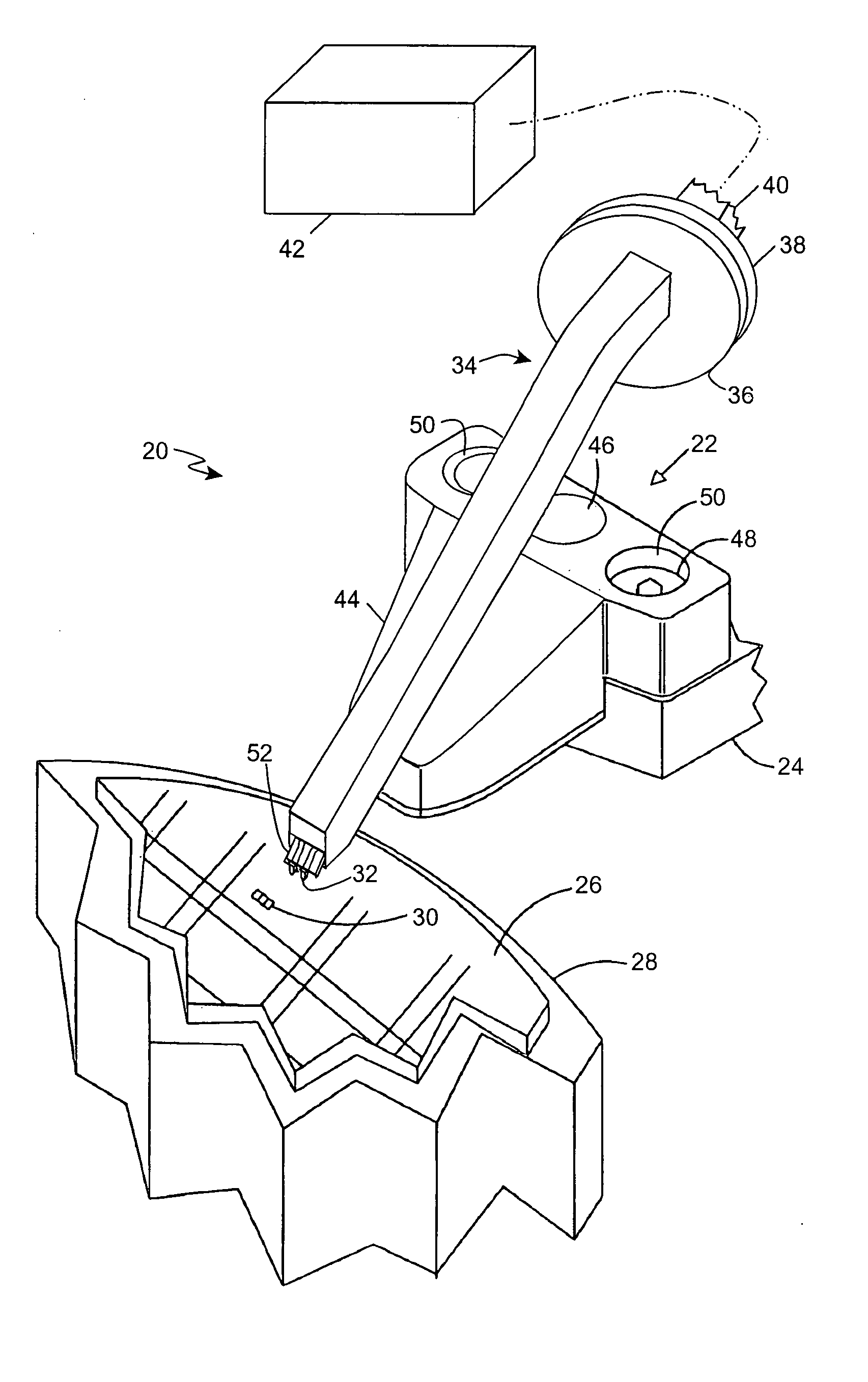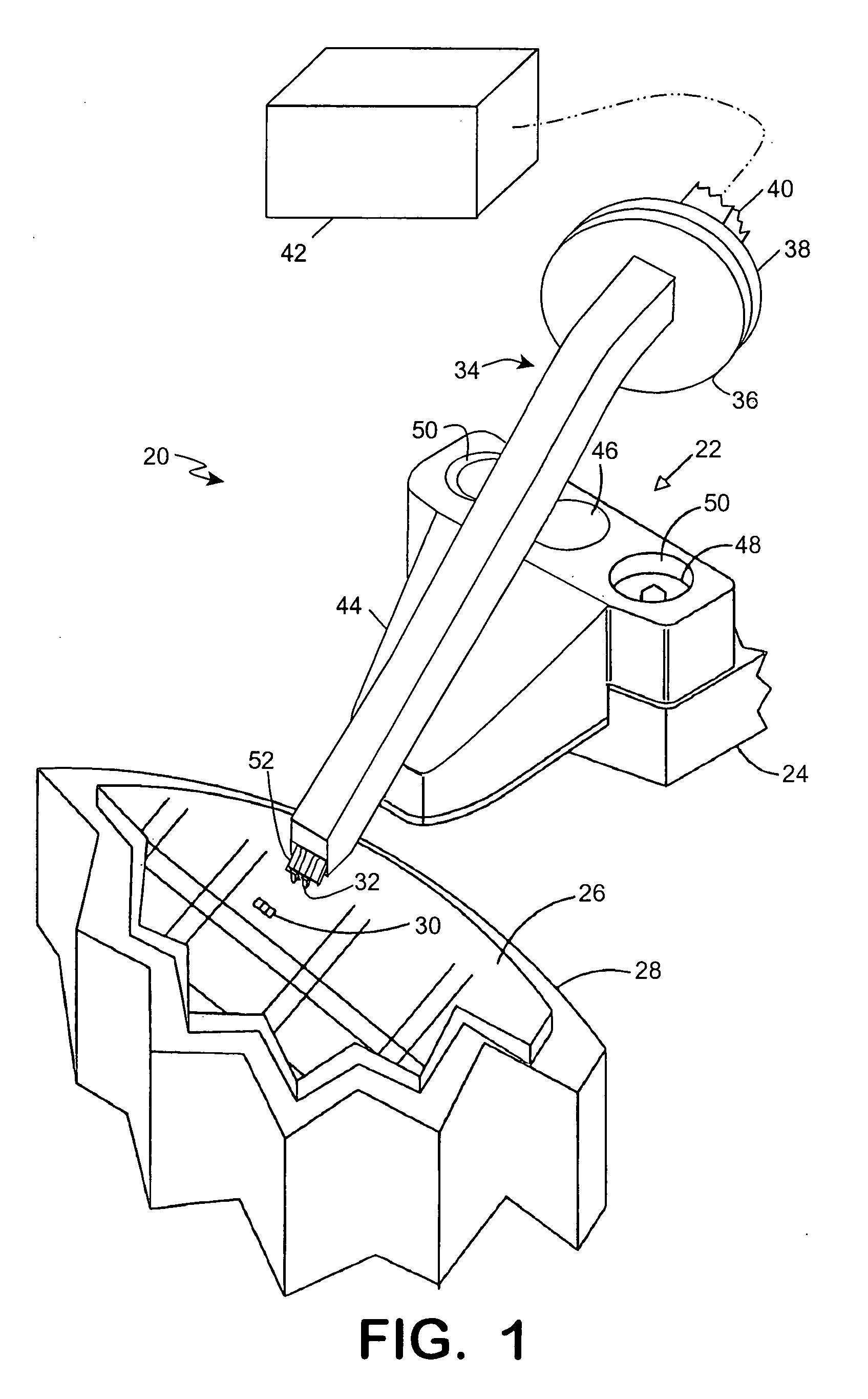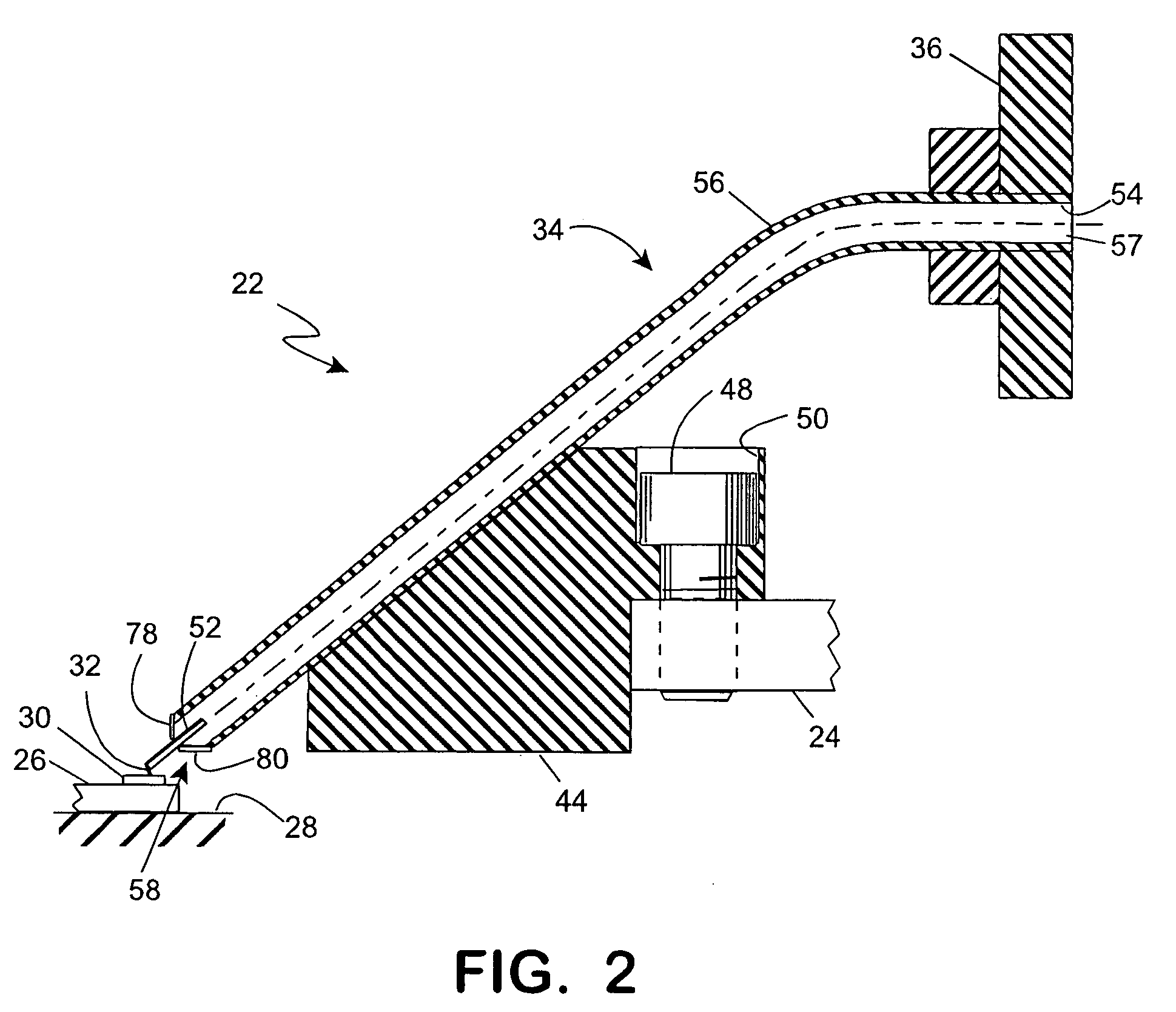Differential waveguide probe
a waveguide and probe technology, applied in the field of wafer probes, can solve the problems of reducing transmission efficiency, affecting the transmission efficiency of signals,
- Summary
- Abstract
- Description
- Claims
- Application Information
AI Technical Summary
Benefits of technology
Problems solved by technology
Method used
Image
Examples
Embodiment Construction
[0024]Integrated circuits (ICs) and other microelectronic devices are fabricated by successively depositing and etching layers of conductive, semi-conductive or insulating material on the surface of a wafer or substrate of semi-conducting material. Typically, the rear surface of the wafer, the back plane, is connected to a ground potential and signals are input to and output by the circuit through conductors that are deposited proximate the front surface of the wafer.
[0025]ICs are commonly inspected “on wafer” by measuring the response of one or more test structures when the structures are stimulated by a test signal. A test structure typically comprises a simple circuit or device under test (DUT) comprising one or more of the elements of the marketable integrated circuits. The devices of the DUT are typically fabricated with the same processes and in the same layers of the wafer fabrication as the corresponding element(s) of the integrated circuit. In addition, a test structure typ...
PUM
 Login to View More
Login to View More Abstract
Description
Claims
Application Information
 Login to View More
Login to View More - R&D
- Intellectual Property
- Life Sciences
- Materials
- Tech Scout
- Unparalleled Data Quality
- Higher Quality Content
- 60% Fewer Hallucinations
Browse by: Latest US Patents, China's latest patents, Technical Efficacy Thesaurus, Application Domain, Technology Topic, Popular Technical Reports.
© 2025 PatSnap. All rights reserved.Legal|Privacy policy|Modern Slavery Act Transparency Statement|Sitemap|About US| Contact US: help@patsnap.com



